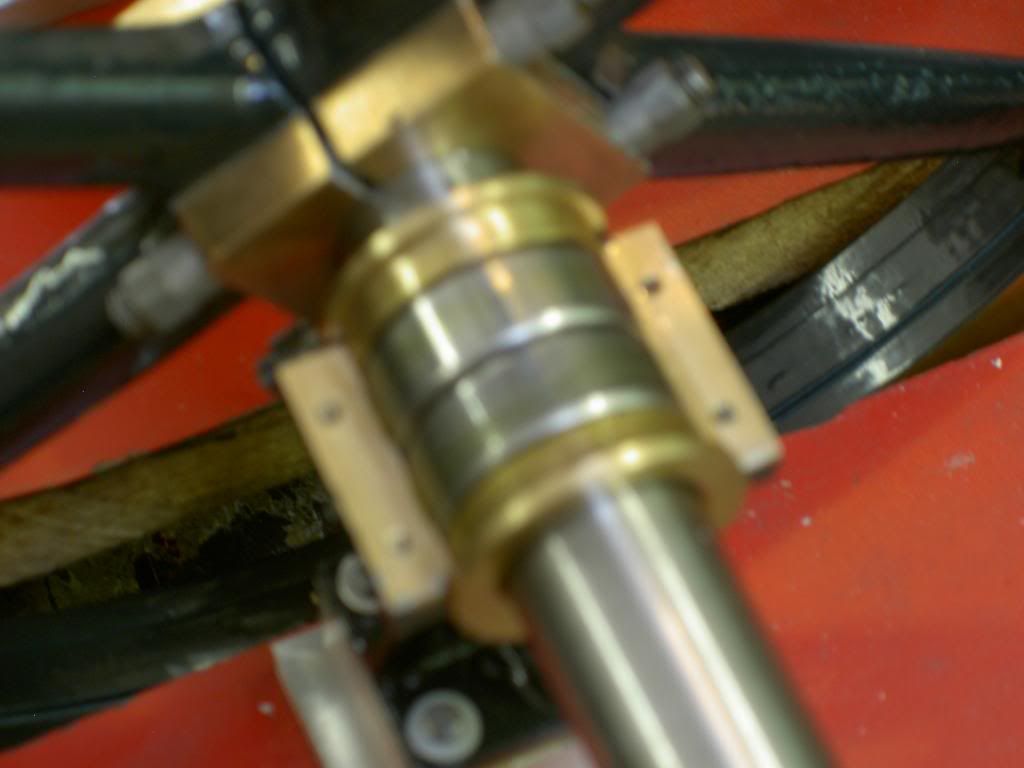Philipintexas
Well-Known Member
- Joined
- Apr 13, 2012
- Messages
- 227
- Reaction score
- 52
My Corliss engine had very large bronze bearings for its 3/4" shaft that produced lots of friction along with the many other parts all dragging on the free operation of the engine. To reduce the friction I modified both bearing holders to hide 1" X 3/4" X 3/8" needle bearings. I used commercial bronze flange bushings to make things look authentic from the outside. The needle bearings cost around $3.75 each but Boy what a difference. The shaft spins effortlessly supported on both ends by the needles. Please forgive the out-of-focus photos, but you get the idea.
I've built several hit-n-miss engines and if I do another I may incorporate this idea to get them to run as slow as possible.


I've built several hit-n-miss engines and if I do another I may incorporate this idea to get them to run as slow as possible.






